Camille Bauer SINEAX V620 Bedienungsanleitung
Camille Bauer
Audio/Video-Konverter
SINEAX V620
Lies die bedienungsanleitung für Camille Bauer SINEAX V620 (2 Seiten) kostenlos online; sie gehört zur Kategorie Audio/Video-Konverter. Dieses Handbuch wurde von 4 Personen als hilfreich bewertet und erhielt im Schnitt 4.7 Sterne aus 2.5 Bewertungen. Hast du eine Frage zu Camille Bauer SINEAX V620 oder möchtest du andere Nutzer dieses Produkts befragen? Stelle eine Frage
Seite 1/2

SINEAX V620 DEUTSCH 1/4 SINEAX V620 DEUTSCH 2/4 SINEAX V620 DEUTSCH 3/4
SINEAX V620 DEUTSCH 4/4
SINEAX V620
Universal-Signalkonverter
für mA, V, TC, RTD, Ω
163 022 10.17
Allgemeine Eigenschaften
• Universal-Eingang, Spannung, Strom, Thermoelemente, Widerstandsthermo-
meter, Potentiometer, Rheostat, veränderbarer Widerstand 2-Leiter.
• Stromversorgung des Sensors in 2-Draht-Technik: 20 V DC stabilisiert, max.
20 mA, vor Kurzschluss geschützt.
• Messung und Rückübertragung auf galvanisch getrenntem Analogausgang mit
aktivem/passivem Ausgang für Spannung und Strom.
• Auswahl mittels DIP-Schalter von: Eingangsart, START-END, Ausgangsmodus
(Null ermittlung, Skalenumkehrung), Ausgangsart (mA oder V).
• Anzeige des Anliegens der Stromversorgung, Skalenüberschreitung oder Ein-
richtfehler bzw. Alarmstatus auf der Frontseite.
• Ausgang für Alarmkontakt mit Relais (Spst), mittels PC einrichtbar.
• STROBE-Eingang zur Aktivierung des Analogausgangs zur Steuerung einer
SPS (alternativ zum Alarmkontakt).
• Möglichkeit zur Programmierung des Skalenanfangs- und endwertes, der
zusätzlichen Eingangsarten, der Wurzelbildung, des Filters, des Burn-out usw.
mittels PC.
• Galvanische 3-Wege-Trennung: 1500 V AC.
Technische Daten
Spannungsversorgung
10…40 V DC, 19…28 V AC, 50…60 Hz, max. 2,5 W; 1,6 W
bei 24 V DC mit Ausgang 20 mA
Eingang Spannung
Zweipolig von 75 mV bis zu 20 V in 9 Skalen,
Eingangs impedanz 1 MΩ, max. Auflösung 15 Bit + Zeichen
Eingang Strom
Zweipolig bis zu 20 mA, Eingangsimpedanz 50 Ω,
max. Auflösung 1 µA
Eingang Widerstands-
thermometer (RTD)
PT100, PT500, PT1000,
Ni100, KTY81, KTY84, NTC
Messung mit 2, 3 oder 4 Drähten, Auslösestrom 0,56 mA,
Auflösung 0,1 °C, automatische Messung von Kabelunter-
brechung oder RTD. Für NTC Widerstandswert < 25 kΩ.
KTY81, KTY84 und NTC nur über Software einrichtbar
Eingang
Thermoelement
Typ J, K, R, S, T, B, E, N; Auflösung 2,5 µV, automatische Messung
der Unterbrechung TC, Eingangsimpedanz >5 MΩ
Eingang Regler Skalenendwert min. 500 Ω, max. 25 kΩ
Eingang Potentiometer
Auslösespannung 300 mV, Eingangsimpedanz > 5 MΩ,
Potentiometer wert von 500 Ω bis 100 kΩ (mit Hilfe eines parallel
geschalteten Widerstandes von 500 Ω)
Bemusterungsfrequenz
Variabel von 240 sps bei Auflösung 11 Bit + Zeichen bis
15 sps bei Auflösung 15 Bit + Zeichen (typische Werte)
Reaktionszeit
35 ms bei Auflösung 11 Bit, 140 ms bei Auflösung 16 Bit
(Messung von Spannung, Strom, Potentiometer)
Ausgang
I: 0…20/4…20 mA, max. Lastwiderstand 600 Ω
V: 0…5/0…10/1…5/2…10 V, min. Lastwiderstand 2 kΩ
Auflösung 2,5 µA / 1,25 mV
Relais Ausgang (spst) Schaltleistung: 1 A … 30 V DC / V AC
Umgebungsbedingungen
Temperatur: -20…60 °C, Feuchtigkeit min. 30%, max. 90%
bei 40 °C ohne Kondensation (siehe Abschnitt «Installations-
vorschriften»)
Fehler in Bezug auf den
maximalen Messbereich
Kalibrierfehler
Temperatur-
koeffizient
Linearitäts-
fehler
Anderes
Eingang für Spannung/
Strom
0,3%
0,01% / °K
0,05% EMI: < 1%
Eingang für PTC J, K, E, T, N 0,5% 0,2 °C
+(2) EMI: <1%Eingang für PTC R, S 0,5% 0,5 °C
Eingang für PTC B (4) 0,5% 1,5 °C
Ausgleich Kaltverbindung 2 °C Umgebungstemperatur 0 bis 50 °C
Potentiometer/Widerstand 0,3%
0,01% / °K
0,1% EMI: < 1%
Eingang Heizwiderstand (5) 0,3%
t > 0°C 0,02%
t < 0°C 0,05%
(1) EMI: < 1%
Spannungsausgang (3) 0,3% 0,01%
Datenspeicher EEPROM für alle Konfigurationsdaten; Speicherzeit 40 Jahre
Das Instrument entspricht folgenden Standards:
EN 61000-6-4/2007 (elektromagnetische Störungen, Industrielle Umgebung)
EN 61000-6-2/2005 (elektromagnetische Unempfindlichkeit, industrielle Umgebung)
EN 61010-1/2001 (Sicherheit)
Alle Schaltkreise müssen mit einer doppelten Isolierung gegenüber gefährliche Spannung
führenden Schaltkreisen versehen werden. Der Transformator zur Stromversorgung muss dem
Standard EN 60742: Isolier- und Sicherheitstransformatoren, Vorschriften entsprechen.
Anmerkungen:
– Benutzen mit Kupferleitung
– Benutzen in Verschmutzungsgrad 2 Umgebung
– Spannungsversorgung muss Klasse 2 sein
– Bei Verwendung eines galvanisch getrennten Netzteils sollte eine Sicherung von 2,5 A max.
davor installiert werden.
(1) Einfluss des Kabelwiderstands 0,005%/Ω, max. 20 Ω
(2) Einfluss des Kabelwiderstands 0,1 µV/Ω
(3) Zu den Fehlern bezüglich des gewählten Eingangs zu summierende Werte
(4) Ausgang null für t < 400 °C
(5) Alle auf den Widerstandswert zu berechnenden Fehler
Auswahl des Eingangs
Die Auswahl der Eingangsart erfolgt durch Einrichtung der Gruppe von DIP-
Schaltern SW1 seitlich des Moduls.
Jeder Eingangsart entspricht eine bestimmte Anzahl von Skalenanfangs- und
endwerten, die mit der Gruppe SW2 wählbar sind.
In der nachstehenden Tabelle werden die möglichen Werte für START und END
je nach der gewählten Eingangsart aufgeführt.
In der Tabelle gibt die linke Spalte die Kombination der DIP-Schalter an, die für
die gewählten START und END einzurichten sind.
Anmerkung für alle Tabellen:
Die Beschriftung
zeigt an, dass der DIP-Schalter in der ON-Position ist.
Kein Eintrag bedeutet, dass der DIP-Schalter in der OFF-Position ist!
SW1: EINGANGSARTEN SW2: START/END
Eingangsarten Eingangsarten START END
1 2 3 4 1 2 3 4 1 2 3 4 5 6
V
Tc K 1 1
Ω/Regler Tc R 2 2
mA Tc S 3 3
Ni100 Tc T 4 4
PT100 Tc B 5 5
PT500 Tc E 6 6
PT1000 Tc N 7 7
Tc J Potentiometer 8 8
SW2
Spannung Widerstand/Regler Strom Potentiometer
START END START END START END START END
1 (*) (*) (*) (*) (*) (*) (*) (*)
2 0 V 100 mV 0 Ω 1 kΩ 0 mA 1 mA 0% 40%
3 400 mV 200 mV 0,5 kΩ 2 kΩ 1 mA 2 mA 10% 50%
4 1 V 500 mV 1 kΩ 3 kΩ 4 mA 3 mA 20% 60%
5 2 V 1 V 2 kΩ 5 kΩ -1 mA 4 mA 30% 70%
6 -5 V 5 V 5 kΩ 10 kΩ -5 mA 5 mA 40% 80%
7 -10 V 10 V 10 kΩ 15 kΩ -10 mA 10 mA 50% 90%
8 -20 V 20 V 15 kΩ 25 kΩ -20 mA 20 mA 60% 100%
Ni100 (RTD) PT100 (RTD) PT500 (RTD) PT1000 (RTD)
START END START END START END START END
1 (*) (*) (*) (*) (*) (*) (*) (*)
2 -50 °C 20 °C -200 °C 50 °C -200 °C 0 °C -200 °C 0 °C
3 -30 °C 40 °C -100 °C 100 °C -100 °C 50 °C -100 °C 50 °C
4 -20 °C 50 °C -50 °C 200 °C -50 °C 100 °C -50 °C 100 °C
5 0 °C 80 °C 0 °C 300 °C 0 °C 150 °C 0 °C 150 °C
6 20 °C 100 °C 50 °C 400 °C 50 °C 200 °C 50 °C 200 °C
7 30 °C 150 °C 100 °C 500 °C 100 °C 300 °C 100 °C 300 °C
8 50 °C 200 °C 200 °C 600 °C 150 °C 400 °C 200 °C 400 °C
Thermoelement J Thermoelement K Thermoelement R Thermoelement S
START END START END START END START END
1 (*) (*) (*) (*) (*) (*) (*) (*)
2 -200 °C 100 °C -200 °C 200 °C 0 °C 400 °C 0 °C 400 °C
3 -100 °C 200 °C -100 °C 400 °C 100 °C 600 °C 100 °C 600 °C
4 0 °C 300 °C 0 °C 600 °C 200 °C 800 °C 200 °C 800 °C
5 100 °C 400 °C 100 °C 800 °C 300 °C 1000 °C 300 °C 1000 °C
6 200 °C 500 °C 200 °C 1000 °C 400 °C 1200 °C 400 °C 1200 °C
7 300 °C 800 °C 300 °C 1200 °C 600 °C 1400 °C 600 °C 1400 °C
8 500 °C 1000 °C 500 °C 1300 °C 800 °C 1750 °C 800 °C 1750 °C
Thermoelement T Thermoelement B Thermoelement E Thermoelement N
START END START END START END START END
1 (*) (*) (*) (*) (*) (*) (*) (*)
2 -200 °C 50 °C 0 °C 500 °C -200 °C 50 °C -200 °C 200 °C
3 -100 °C 100 °C 500 °C 600 °C -100 °C 100 °C -100 °C 400 °C
4 -50 °C 150 °C 600 °C 800 °C 0 °C 200 °C 0 °C 600 °C
5 0 °C 200 °C 700 °C 1000 °C 100 °C 300 °C 100 °C 800 °C
6 50 °C 250 °C 800 °C 1200 °C 150 °C 400 °C 200 °C 1000 °C
7 100 °C 300 °C 1000 °C 1500 °C 200 °C 600 °C 300 °C 1200 °C
8 150 °C 400 °C 1200 °C 1800 °C 400 °C 800 °C 500 °C 1300 °C
(*) START oder END, die im Speicher mittels PC oder Programmiertasten einge-
richtet wurden.
Beliebige Einrichtung von START und END zur Messung
Die Tasten START und END unter der Gruppe der DIP-Schalter SW2 ermögli-
chen das beliebige Einrichten des Skalenanfangs- und endwertes innerhalb des
mit den DIP-Schaltern eingerichteten Messbereichs. Für diesen Vorgang ist ein
geeig neter Signalgenerator erforderlich, der in der Lage ist, die gewünschten
Werte für Skalenende- oder anfang zu liefern.
Dabei ist wie folgt vorzugehen:
1. Richten Sie mit der entsprechenden Gruppe von DIP-Schaltern die gewünsch-
te Eingangsart, sowie START und END für die Messung ein, die den gewünsch-
ten Skalenanfangs- und endwert für die Messung enthalten.
2. Schalten Sie die Stromversorgung am Modul zu.
3. Bringen Sie einen Generator oder Kalibrator für das Signal an, das gemessen
und übertragen werden soll.
4. Richten Sie am Generator den gewünschten Skalenanfangswert ein.
5. Betätigen Sie die Taste START für mindestens 3 s. Ein Blinken der grünen LED
auf der Frontplatte des Instruments zeigt die erfolgte Speicherung des Wertes
an.
6. Wiederholen Sie die Punkte 4 und 5 für den gewünschten Wert END.
7. Entfernen Sie die Stromversorgung des Moduls und stellen Sie die DIP-Schal-
ter der Gruppe SW2 für die Einrichtung der Werte von START und END in die
Position OFF.
Jetzt ist das Modul für den gewünschten Skalenanfangs- und endwert konfigu-
riert. Zu seiner Programmierung, auch für eine andere Eingangsart, genügt es,
den gesamten Vorgang zu wiederholen.
Auswahl des Ausgangs
Die DIP-Schalter mit Nummer 7 und 8 der Gruppe SW2 ermöglichen das ent-
sprechende Einrichten des Ausgangs mit oder ohne Ermittlung von Null, norma-
lem oder umgekehrtem Ausgang. Die Gruppe der DIP-Schalter SW3 ermöglicht
die Auswahl der Ausgangsart.
Anmerkung: Die Einrichtung der DIP-Schalter muss bei nicht gespeistem
Modul erfolgen, wodurch elektrostatische Entladungen vermieden werden,
die zu einer möglichen Beschädigung des Moduls führen können.
SW2 Ausgangsart SW3 Ausgang
7 1 2
0…20 mA / 0…10 V
Spannung
4…20 mA / 2…10 V Strom
8
Normal
Umgekehrt
Einrichtung mittels PC
Mittels eines PC und der Software V620 (downloadbar unter
www.camillebauer.com) ist es möglich, ausser dem Skalenanfang und ende
weitere normalerweise unveränderliche Parameter einzurichten.
• Zusätzliche Eingangsarten
• Digitaler Filter (normalerweise nicht inbegriffen)
• Wurzelziehung (normalerweise nicht inbegriffen)
• Negatives Burn-out (normalerweise positiv)
• Alarm (normalerweise als Fehlermeldung eingerichtet)
• Skalenanfang und ende des Analogausgangs
• Wert des Analogausgangs bei einem Fehler
• Unterdrückung bei Netzfrequenz 50/60 Hz (normalerweise auf 50 Hz eingerich-
tet)
• Bemusterungsgeschwindigkeit/Auflösung (normalerweise auf 15 sps/16 Bit
eingerichtet
• Messung mit 3 oder 4 Drähten bei Heizwiderständen (normalerweise auf 3
Drähte eingerichtet
• Auslösung des Alarmrelais bei einem Defekt des Instruments.
Die Anleitung zur Einrichtung und das Anschlusskabel liegen der Software bei,
die als Zubehör zu bestellen ist.
Anzeigen mittels LED auf der Frontseite
Grüne LED Bedeutung
Blinken
(Freq. = 1 Blinkz./s)
Ausserhalb Skala, Burn-out oder Interner Defekt
Blinken
(Freq. = 2 Blinkz./s)
Fehler beim Einrichten der DIP-Schalter
Dauerhaft leuchtend Zeigt das Anliegen der Stromversorgung an
Gelbe LED Bedeutung
Eingeschaltet Anzeige eines Alarms (Relaiskontakt offen)
Ausgeschaltet Kein Alarm (Relaiskontakt geschlossen)
Elektrische Anschlüsse
Stromversorgung
Die Versorgungsspannung muss zwischen 10 und
40 V DC (unabhängig von der Polarität), 19 und
28 V AC liegen; siehe auch im Abschnitt «Installa-
tionsvorschriften».
Die Obergrenzen dürfen nicht überschritten
werden, da es sonst zu schweren Schäden am Modul kommen kann. Es
ist notwendig, die Stromversorgungsquelle vor eventuellen Defekten des Moduls
durch eine ausreichend bemessene Sicherung zu schützen.
19 ÷ 28 VAC
10 ÷ 40 VDC
2,5 W max.
2
3
Stromeingang Spannungseingang
mA Eingang
11
10
+
mA Eingang (2-Draht)
7
11
+
V Eingang
9
10
+
Die Stromversorgung des
Loop erfolgt über den Sensor
Die Stromversorgung des
Loop erfolgt über das Modul
Eingang
Thermoelement
Eingang Heizwiderstand
NTC, KTY81,
KTY84
PT100, Ni100, PT500, PT1000
mV/TC Eingang
12
10
+
RTD 2-Draht
10
12
9
8
RTD 3-Draht
10
12
9
8
RTD 4-Draht
10
12
9
8
Eingang Potentiometer / Regler Eingang Strobe (7)
10
12
9
8
P
R
10
12
9
8
4
5
+
-
12…24 VDC
Mit Widerstand R = 500 Ω (nicht mitgeliefert), P = 500 Ω ÷ 100 kΩ
Ausgang zur Rückübertragung
Relaisausgang
(10)
Spannung
Erzeugter
Strom (8)
Externe Strom-
versorgung (9)
V Ausgang
6
1
+
V
mA Ausgang
6
1
+
A
+ mA Ausgang
1
6
A
+
4
5
1A - 30 V
(7) Alternativ zum Relaisausgang. Ist von den übrigen Schaltkreisen isoliert
und dient zur Aktivierung des analogen Stromausgangs. Kann für das Mul-
tiplexing eines SPS-Eingangs an V620 verwendet werden. Zur Aktivierung
siehe unter «Einstellungen mit internen Brücken».
(8) Bereits gespeister, aktiver Ausgang zum Anschluss an passive Eingänge.
(9) Nicht gespeister, passiver Ausgang zum Anschluss an aktive Eingänge. Zur
Auswahl siehe unter «Einstellungen mit internen Brücken»
(10) Alternativ zum Eingang STROBE aktiviert. Relais-Öffnerkontakt, bei Alarm
geöffnet.
POSITION DER INTERNEN BRÜCKEN EINSTELLUNGEN MIT INTERNEN BRÜCKEN
AKTIVER / PASSIVER AUSGANG
RELAISAUSGANG / STROBE-EINGANG
Relaisausgang
STROBE-Eingang
Aktiver Ausgang
Passiver Ausgang
SW1
SW2
SW3
J3
J9
J1
J9
J9
J3
J1
J3
J1
Installationsvorschriften
Das Modul wurde zur Montage auf DIN-Schiene 46277 in senkrechter Position
entworfen. Für eine optimale Funktionsweise und Dauerhaftigkeit muss eine an-
gemessene Belüftung zu dem/n Modul/en gewährleistet und vermieden werden,
Kanäle oder andere Gegenstände darauf zu stellen, die die Belüftungsschlitze
verschliessen. Vermeiden Sie eine Montage der Module über Wärme erzeugen-
den Geräten. Zu empfehlen ist die Montage im unteren Teil des Schaltkastens.
Erschwerte Betriebsbedingungen
Erschwerte Betriebsbedingungen sind:
• Hohe Versorgungsspannung (> 30 V DC / > 26 V AC).
• Stromversorgung des Eingangssensors.
• Verwendung des Ausgangs für Fremdstrom.
Wenn die Module nebeneinander montiert sind, ist es möglich, dass sie in fol-
genden Fällen um mindestens 5 mm voneinander getrennt werden müssen:
• Bei einer Temperatur des Schaltkastens von über 45 °C und Vorliegen von min-
destens einer der erschwerten Bedingungen.
• Bei einer Temperatur des Schaltkastens von über 35 °C und Vorliegen von min-
destens zwei der erschwerten Bedingungen.
Elektrische Verbindungen
Zur Erfüllung der Immunitätsanforderungen wird der Einsatz von abgeschirmten
Kabeln zum Anschluss der Signale empfohlen. Die Abschirmung muss an eine
Primärerdung für die Instrumentierung angeschlossen werden. Ausserdem ist es
günstig, die Leiter nicht in der Nähe der Kabel zur Leistungsinstallation zu ver-
legen, wie Invertern, Motoren, Induktionsöfen usw.
Tel. +41 56 618 21 11
Camille Bauer Metrawatt AG Fax +41 56 618 21 21
Aargauerstrasse 7 info@cbmag.com
CH-5610 Wohlen/Schweiz www.camillebauer.com
PM1000897 000 02

SINEAX V620 ENGLISH 1/4 SINEAX V620 ENGLISH 2/4 SINEAX V620 ENGLISH 3/4
SINEAX V620 ENGLISH 4/4
SINEAX V620
Universal Signal Converter
for mA, V, TC, RTD, Ω
163 022 10.17
General characteristics
• Universal input: voltage, current, thermocouples, thermoresistences, potentio-
meter, rheostat.
• Sensor powered by 2-wire technique: 20 V DC stabilised, 20 mA max. with
short-circuit protection.
• Measurement and re-transmission on isolated analog output, with voltage and
current output.
• DIP-switch for selecting: type of input, START-END, output mode (zero eleva-
tion, scale inversion), output voltage type (mA or V).
• Front panel indicating: power on, off scale or setting error, alarm status.
• Relay (spst) output, programmable through PC.
• STROBE input to activate the analog output on PLC command (alternatively to
alarm contact).
• Facility for programming the following with a PC: beginning and end scale, ad-
ditional input types, square root extraction, filter, burn-out etc.
• 3-point insulation: 1500 V AC.
Technical data
Power supply
10…40 V DC, 19…28 V AC, 50…60 Hz, max. 2.5 W; 1.6 W
at 24 V DC with 20 mA output
Voltage input
Bipolar from 75 mV up to 20 V in 9 scales,
input impedance 1 MΩ, resolution max. 15 bits + sign
Current input
Bipolar up to 20 mA, input impedance 50 Ω,
resolution max. 1 µA
Thermoresistance (RTD)
input PT100, PT500,
PT1000, Ni100, KTY81,
KTY84, NTC
2, 3 or 4 wires measurement, energising current 0.56 mA,
resolution 0.1 °C, automatic detection of cable interruption or
RTD. Resistive value for NTC: < 25 kΩ.
KTY81, KTY84 and NTC may be set only via software
Thermocouple input
Type J, K, R, S, T, B, E, N; resolution 2.5 µV, automatic detection of
TC interruption, input impedance >5 MΩ
Rheostat input Full scale min. 500 Ω, max. 25 kΩ
Potentiometer input
Excitation voltage 300 mV, input impedance > 5 MΩ,
potentiometer value from 500 Ω to 100 kΩ (with the aid of a
parallel resistence equal to 500 Ω)
Sampling frequency
Variable from 240 sps with 11 bits resolution + sign to
15 sps with 15 bits + sign resolution (typical values))
Response time
35 ms with 11 bits resolution, 140 ms with 16 bits resolution
(measurement of voltage, current, potentiometer)
Output
I: 0…20/4…20 mA, max. load resistance 600 Ω
V: 0…5/0…10/1…5/2…10 V, min. load resistance 2 kΩ
Resolution 2.5 µA / 1.25 mV
Relay output (spst) Capacity: 1 A … 30 V DC / V AC
Environmental conditions
Temperature: -20…60 °C, humidity min. 30%, max. 90%
at 40 °C non condensing (see «Installation instructions»)
Errors referred to max.
measuring range
Calibration
error
Thermal
coefficient
Linearity error Others
Input for voltage/current 0.3%
0.01% / °K
0.05% EMI: < 1%
Input for PTCs J, K, E, T, N 0.5% 0.2 °C
+(2) EMI: <1%Input for PTCs R, S 0.5% 0.5 °C
Input for PTC B (4) 0.5% 1.5 °C
Cold junction compensation 2 °C in ambient range 0 to 50 °C
Potentiometer/resistor 0.3%
0.01% / °K
0.1% EMI: < 1%
Input for thermoresis-
tance (5)
0.3%
t > 0°C 0.02%
t < 0°C 0.05%
(1) EMI: < 1%
Voltage output (3) 0.3% 0.01%
Data memory EEPROM for all configuration data; storage time: 40 years
Standards:
EN 61000-6-4/2007 (electromagnetic emission, industrial environment)
EN 61000-6-2/2005 (electromagnetic immunity, industrial environment)
EN 61010-1/2001 (safety)
All circuits are to be safety isolated from hazardous live by double insulation. The power supply
transformer must comply with EN 60742: Isolating transformers and safety isolating transfor-
mers requirements.
Notes:
– Use with copper conductor
– Use in pollution degree 2 environment
– Power supply must be Class 2
– When supplied by an isolated limited voltage/limited current power supply a fuse rated
max. 2.5 A shall be installed in the field.
(1) Influence of cable resistance 0.005%/Ω, max. 20 Ω
(2) Influence of cable resistance 0.1 µV/Ω
(3) Values to be added to the errors of the selected input
(4) Output zero if t < 400 °C
(5) All the values have to be calculated on the resistive value
Selection input / measuring scale
The type of input is selected by setting the SW1 DIP-switch group at the side
of the module.
Every type of input is matched to a certain number of scale beginnings and ends
values which can be selected with the SW2 group.
The table below lists possible START and END values according to the type of
input selected.
Note for all following tables:
The indication indicates that the DIP-switch is set in position ON.
No indication is provided when the DIP-switch is set in position OFF!
SW1: INPUT TYPE SW2: START and END
Input type Input type START END
1 2 3 4 1 2 3 4 1 2 3 4 5 6
V
Tc K 1 1
Ω/Rheostat Tc R 2 2
mA Tc S 3 3
Ni100 Tc T 4 4
PT100 Tc B 5 5
PT500 Tc E 6 6
PT1000 Tc N 7 7
Tc J Potentiometer 8 8
SW2
Voltage
Resistance/
Rheostat
Current Potentiometer
START END START END START END START END
1 (*) (*) (*) (*) (*) (*) (*) (*)
2 0 V 100 mV 0 Ω 1 kΩ 0 mA 1 mA 0% 40%
3 400 mV 200 mV 0.5 kΩ 2 kΩ 1 mA 2 mA 10% 50%
4 1 V 500 mV 1 kΩ 3 kΩ 4 mA 3 mA 20% 60%
5 2 V 1 V 2 kΩ 5 kΩ -1 mA 4 mA 30% 70%
6 -5 V 5 V 5 kΩ 10 kΩ -5 mA 5 mA 40% 80%
7 -10 V 10 V 10 kΩ 15 kΩ -10 mA 10 mA 50% 90%
8 -20 V 20 V 15 kΩ 25 kΩ -20 mA 20 mA 60% 100%
Ni100 (RTD) PT100 (RTD) PT500 (RTD) PT1000 (RTD)
START END START END START END START END
1 (*) (*) (*) (*) (*) (*) (*) (*)
2 -50 °C 20 °C -200 °C 50 °C -200 °C 0 °C -200 °C 0 °C
3 -30 °C 40 °C -100 °C 100 °C -100 °C 50 °C -100 °C 50 °C
4 -20 °C 50 °C -50 °C 200 °C -50 °C 100 °C -50 °C 100 °C
5 0 °C 80 °C 0 °C 300 °C 0 °C 150 °C 0 °C 150 °C
6 20 °C 100 °C 50 °C 400 °C 50 °C 200 °C 50 °C 200 °C
7 30 °C 150 °C 100 °C 500 °C 100 °C 300 °C 100 °C 300 °C
8 50 °C 200 °C 200 °C 600 °C 150 °C 400 °C 200 °C 400 °C
Thermocouple J Thermocouple K Thermocouple R Thermocouple S
START END START END START END START END
1 (*) (*) (*) (*) (*) (*) (*) (*)
2 -200 °C 100 °C -200 °C 200 °C 0 °C 400 °C 0 °C 400 °C
3 -100 °C 200 °C -100 °C 400 °C 100 °C 600 °C 100 °C 600 °C
4 0 °C 300 °C 0 °C 600 °C 200 °C 800 °C 200 °C 800 °C
5 100 °C 400 °C 100 °C 800 °C 300 °C 1000 °C 300 °C 1000 °C
6 200 °C 500 °C 200 °C 1000 °C 400 °C 1200 °C 400 °C 1200 °C
7 300 °C 800 °C 300 °C 1200 °C 600 °C 1400 °C 600 °C 1400 °C
8 500 °C 1000 °C 500 °C 1300 °C 800 °C 1750 °C 800 °C 1750 °C
Thermocouple T Thermocouple B Thermocouple E Thermocouple N
START END START END START END START END
1 (*) (*) (*) (*) (*) (*) (*) (*)
2 -200 °C 50 °C 0 °C 500 °C -200 °C 50 °C -200 °C 200 °C
3 -100 °C 100 °C 500 °C 600 °C -100 °C 100 °C -100 °C 400 °C
4 -50 °C 150 °C 600 °C 800 °C 0 °C 200 °C 0 °C 600 °C
5 0 °C 200 °C 700 °C 1000 °C 100 °C 300 °C 100 °C 800 °C
6 50 °C 250 °C 800 °C 1200 °C 150 °C 400 °C 200 °C 1000 °C
7 100 °C 300 °C 1000 °C 1500 °C 200 °C 600 °C 300 °C 1200 °C
8 150 °C 400 °C 1200 °C 1800 °C 400 °C 800 °C 500 °C 1300 °C
(*) START or END are set in the memory with the PC or with the programming
push-buttons.
N.B.: DIP-switches must be set while the module is powered down, other-
wise, the module may be damaged!
Setting START and END at will
The START and END push-buttons under the SW2 DIP-switch group allow to set
the beginning and end scale at will within the scale pre-set through the DIP-swit-
ches. To obtain this facility it is necessary to use a suitable signal generator, able
to furnish the desidered values of beginning and end scale.
The procedure is following:
1. Set through DIP-switches, the type of input, START and END measurement
which include the required beginning and end values.
2. Power up the module.
3. Supply a calibrator or simulator of the signal you wish to measure and retrans-
mit.
4. Set the required START value on the calibrator (or other instrument).
5. Press the START push-button for at least 3 sec. The green LED on the front
panel flashes to indicate the value has been stored.
6. Repeat points 4 and 5 for the required END value.
7. Cut power to the module and set to OFF position the DIP-switches of group
SW2, correspondent to the settings of START and END values.
The module is now configured for the required start and end scale. To reprogram
it (e.g. for a different type of input) repeat the whole procedure.
Selecting output
DIP-switches numbers 7 and 8 of the SW2 group enable you to set the output
with or without zero elevation, or as a normal or reversed output. The SW3 DIP-
switch group enables you to select the output type.
N.B.: DIP-switches must be set while the module is powered down, avoiding
electrostatic discharges, otherwise the module may be damaged.
SW2 Output mode SW3 Output
7 1 2
0…20 mA / 0…10 V
Voltage
4…20 mA / 2…10 V Current
8
Normal
Reversed
Setting with a PC
By using a PC and V620 software (download www.camillebauer.com), it is pos-
sible to set other normally fixed parameters in addition to start and end scale.
• Additional input types
• Digital filter (normally disabled)
• Square root extraction (normally disabled)
• Negative burn-out (normally positive)
• Alarm (normally set as error signalling)
• Start and end scale of the analog output
• Value of the analog output in case of error
• Rejection programmable for 50 or 60 Hz mains frequency (normally set to
50Hz)
• Sampling frequency/resolution (normally set to 15 sps/16 bits)
• 3 or 4 wires measure for thermal resistance (normally set to 3 wires)
• Action of the digital output alarm in case of fault.
Instructions for setting and for the connection cable are supplied with the soft-
ware (to be requested as an accessory item).
LED indication on the front
Green LED Meaning
Flashing
(freq: 1 flash/s)
Out range, burn-out or internal fault
Flashing
(freq = 2 flashes/s)
Error on DIP-switches setting
Steady ON Indicates the presence of power supply
Yellow LED Meaning
Steady ON Alarm signalling (relay contact opened)
OFF No alarm (relay contact closed)
Electrical connections
Power supply
Power supply voltage must be in the range 10 to
40 V DC (at any polarity), 19 to 28 V AC; also see
section “Installation instructions”.
The upper limits must not be exceeded, to
avoid serious damage to the module. Protect
the power supply source against possible damage of the module by using a fuse
of suitable size.
19 ÷ 28 VAC
10 ÷ 40 VDC
2.5 W max.
2
3
Current input Voltage input
mA input
11
10
+
mA input (2 wire)
7
11
+
V input
9
10
+
The loop is powered by
the sensor
The loop is powered by
the module
Thermocouple
input
Thermoresistance input
NTC, KTY81,
KTY84
PT100, Ni100, PT500, PT1000
mV/TC input
12
10
+
RTD 2 wire
10
12
9
8
RTD 3 wire
10
12
9
8
RTD 4 wire
10
12
9
8
Potentiometer/rheostat input Strobe input (7)
10
12
9
8
P
R
10
12
9
8
4
5
+
-
12…24 VDC
With resistance R = 500 Ω (not provided), P = 500 Ω ÷ 100 kΩ
Re-transmitted output
Relay output (10)
Voltage
Generated
current (8)
External power supply
current (9)
V output
6
1
+
V
mA output
6
1
+
A
+ mA output
1
6
A
+
4
5
1A - 30 V
(7) As alternative to the relay output. It is isolated from the other circuits and
enables the current analog output. It may be used to multiplex a PLC input
on an V620. To enable it see “Settings through internal bridges”.
(8) Active output (powered) to connect to passive inputs.
(9) Unpowered passive output to be connected to active inputs. To enable it,
see “Settings through internal bridges”
(10) As alternative to STROBE input; relay contact normally closed, opened in
event of alarm.
INTERNAL BRIDGES POSITION SETTINGS THROUGH INTERNAL BRIDGES
ACTIVE / PASSIVE OUTPUT
RELAY OUTPUT / STROBE INPUT
Relay Output
STROBE Input
Active Output
Passive Output
SW1
SW2
SW3
J3
J9
J1
J9
J9
J3
J1
J3
J1
Installation instructions
The module was designed for fitting to guide 46277, in a vertical position. For
optimum operation and long life, make sure adequate ventilation is provided for
the module/s, avoiding placing raceways or other objects which could obstruct
the ventilation grilles. Do not install the modules above appliances generating
heat we advise you to install in the lower part of the panel.
Severe operating conditions
Severe operating conditions are as follows:
• High power supply voltage (> 30 V DC / > 26 V AC).
• Power supply of the sensor at input.
• Use of the output on generated current.
When modules are installed side by side, it may by necessary to separate them
by at least 5 mm in the following cases:
• If panel temperature exceed 45 °C and at least one of the severe operating
conditions exists.
• If panel temperature exceed 35 °C and at least two of the severe operating
conditions exists.
Electrical connections
We advise you to use shielded cables for connecting signals. The shield must
be connected to an earth wire used specifically for instrumentation. Moreover,
it is good practice to avoid routing conductors near power appliances such as
inverters, motors, induction ovens, etc.
Phone. +41 56 618 21 11
Camille Bauer Metrawatt AG Fax +41 56 618 21 21
Aargauerstrasse 7 info@cbmag.com
CH-5610 Wohlen/Switzerland www.camillebauer.com
PM1000898 000 02
Produktspezifikationen
| Marke: | Camille Bauer |
| Kategorie: | Audio/Video-Konverter |
| Modell: | SINEAX V620 |
Brauchst du Hilfe?
Wenn Sie Hilfe mit Camille Bauer SINEAX V620 benötigen, stellen Sie unten eine Frage und andere Benutzer werden Ihnen antworten
Bedienungsanleitung Audio/Video-Konverter Camille Bauer
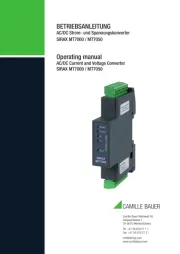
3 September 2025
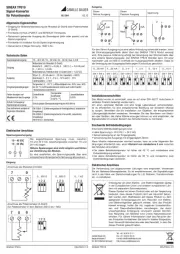
3 September 2025
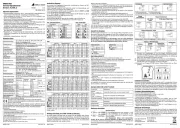
3 September 2025
Bedienungsanleitung Audio/Video-Konverter
- GEM
- FiiO
- Megasat
- DataVideo
- SilverStone
- Kramer
- Spatz
- Ebode
- HELGI
- Optoma
- Pro-Ject
- Sunix
- Technaxx
- Gefen
- Marmitek
Neueste Bedienungsanleitung für -Kategorien-

3 September 2025
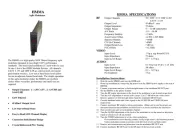
2 September 2025
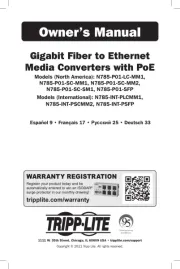
1 September 2025
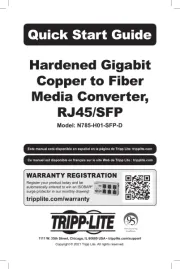
1 September 2025
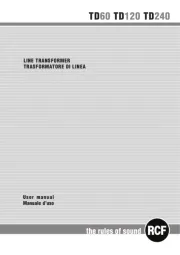
1 September 2025
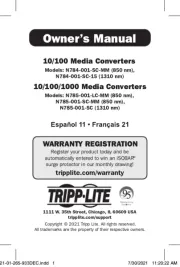
1 September 2025
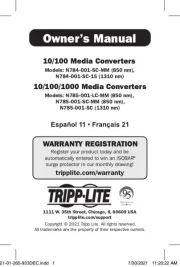
1 September 2025
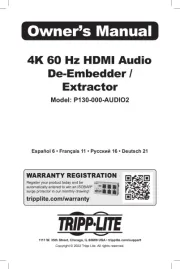
1 September 2025
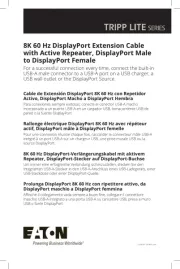
1 September 2025
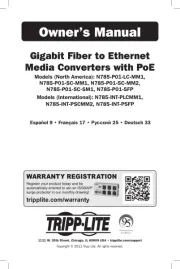
1 September 2025